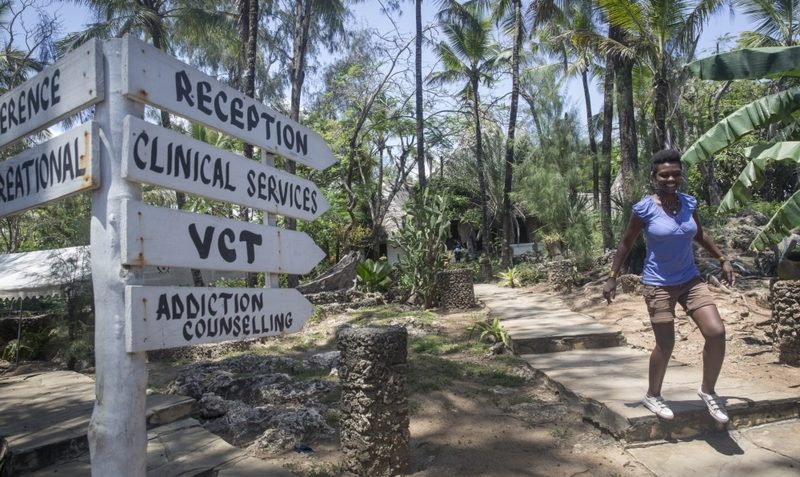Harm reduction: community and clergy in Kenya come together
 © Corrie Wingate for Frontline AIDS
© Corrie Wingate for Frontline AIDS
How the Omari Project and KANCO are educating people about harm reduction and providing services for people who use drugs in Eastern Africa.
Lucy K. Maroncha is a Key Correspondent from Kenya
In Kenya’s coastal region, communities and religious groups have started supporting KANCO’s HIV and Harm Reduction for Eastern Africa programme as a measure to reduce HIV and drug-use related incidents.
In Watamu, injecting drug use and sex work are common. When the Omari Project, which supports people who use drugs and people living with HIV, started in 1994 many in the local community and within the clergy misconceived the gesture, thinking the organisation was fuelling the use of drugs and promoting sex work. But years of advocacy and sensitisation have brought more acceptance.
Abdalla Hamid, the Omari Project Programme Manager in Malindi, says the project has been educating the community and religious leaders about heroin for years, conveying the message that it is commonly available and highly addictive, which is why punishment does not help someone who uses drugs and is not the route to take to reduce new HIV infections.
Hamid chairs the Malindi Community Advisory Board, which consists of representatives from the County Commissioner’s office, the judiciary, the police, religious leaders and youth representatives. The Board exists to oversee the wellbeing of people who use drugs and are living with HIV and has been formed in a bid to provide the best interventions to meet their health needs.
“The Kenya Constitution provides the right to good health for all,” he says simply.
One such intervention is a needle and syringe programme, which is tailored to reduce blood-borne diseases such as HIV and Hepatitis B among people who use drugs.
Kelvin Macharia, 38, lauds the Omari project for providing clean needles. He says he is sure he got HIV from sharing needles. Kelvin, who is now on methadone, says that before the needle and syringe programme was established, many people who inject drugs would collect used needles from hospital trash bins and use them.
At one point Kelvin almost lost his leg to amputation when he missed a vein while injecting. “By the time I thought of going to the hospital, my entire leg had completely decayed,” he says.
James Ndimbii, a social scientist and researcher at KANCO, the Alliance’s Linking Organisation in Kenya until December 2018, says the risk of amputation for people who use drugs are the result of unsafe injecting practices. He explains that when a person who injects drugs misses their vein while injecting it can cause an abscess, which can lead to amputation of the infected part if not treated on time.
KANCO and its partners are addressing this issue by providing knowledge of safe injecting practices to people who use drugs through seminars and community outreach programs.
Reports from World Health Organization indicate that globally, approximately 13 million people inject drugs and 1.7 million of them are living with HIV. With such a clear need, hopes are high that more support will be given to enhance friendly environments and services for people who use drugs who are also living with HIV.
We are seeing the impact that years of advocacy about drug use and HIV can have. In Kenya’s Coastal region, with a growing number of people in the community and clergy now sympathetic to the lives of people who use drugs, there is more hope that harm reduction interventions can flourish.
With thanks to KANCO, the Alliance’s Linking Organisation in Kenya, who is delivering the HIV and Harm Reduction for Eastern Africa project, funded by the Global Fund to Fight AIDS, Tuberculosis and Malaria.
This article was written as the International HIV/AIDS Alliance, before we changed our name to Frontline AIDS.
Tags
Harm reductionKenyaThe Global Fund



